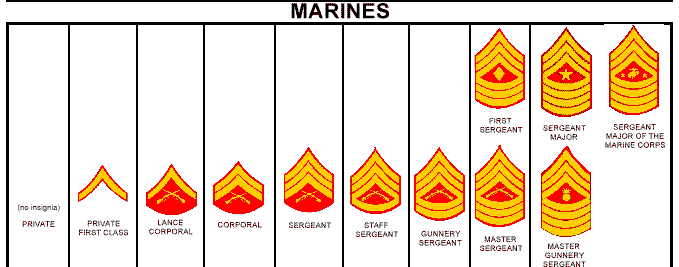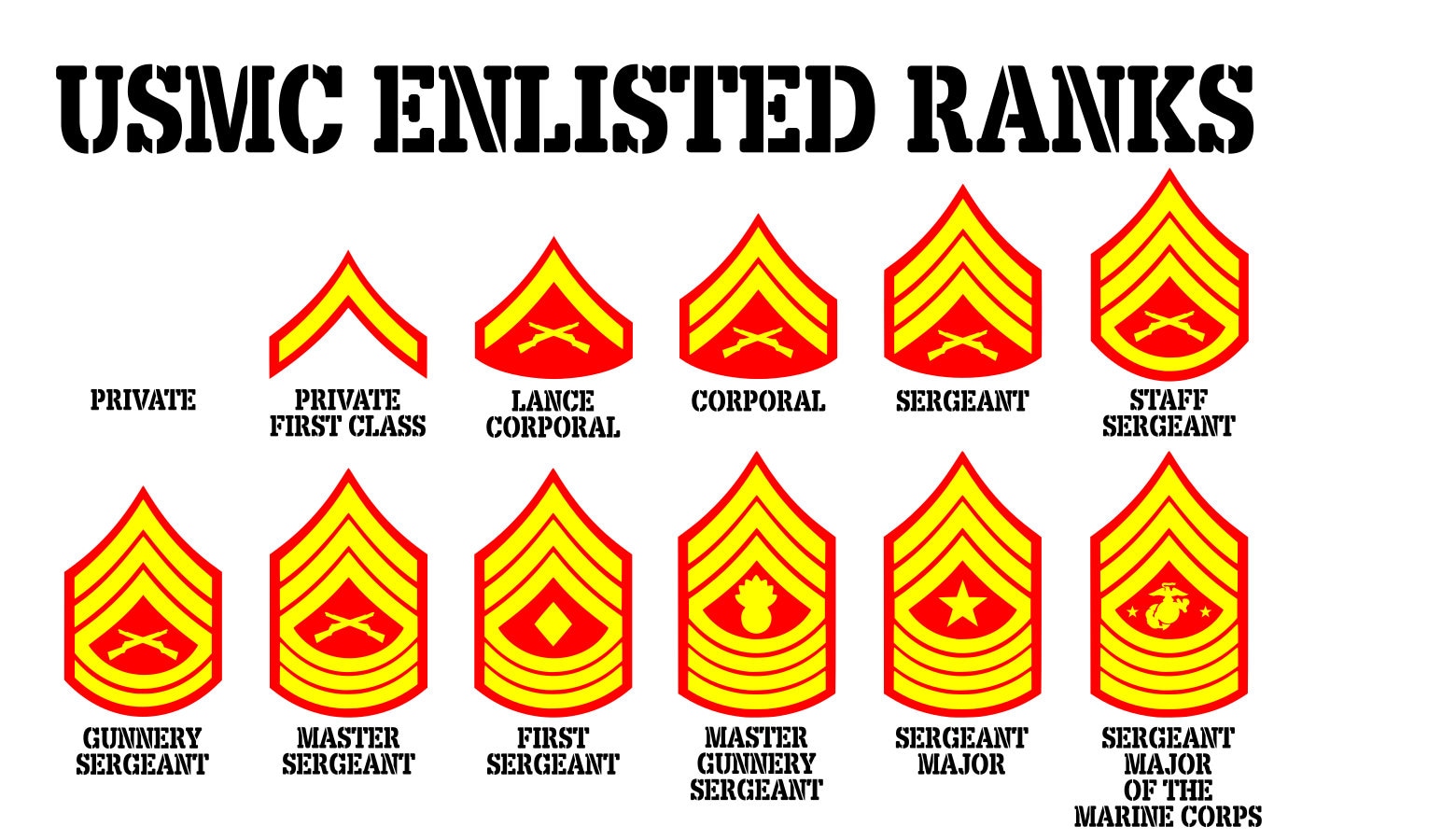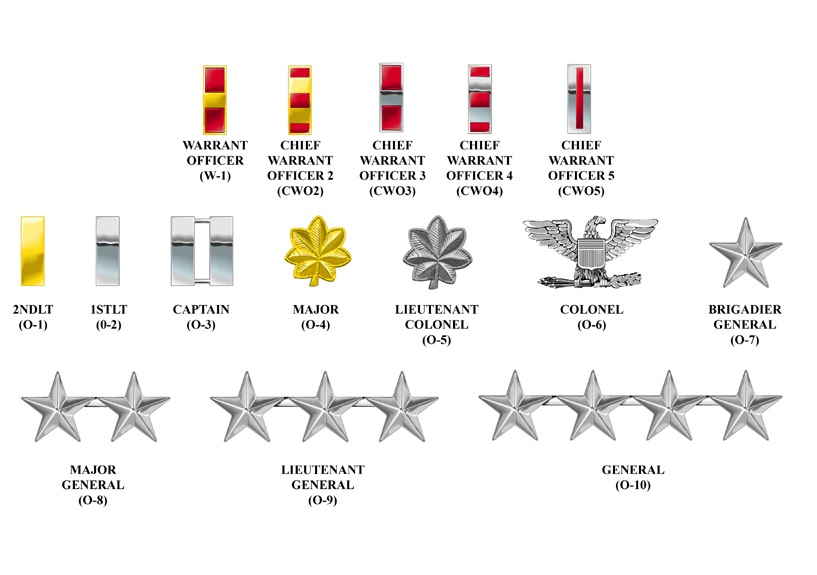

Related: 20 Qualities of a Great Leader (With Tips) E-4, corporalĪ corporal has the lowest NCO rank, leading junior enlisted Marines. There are a limited number of openings for NCOs in each MOS. They plan daily unit operations, enforce all military standards and are held accountable for the actions of their team, section or squad. Their responsibilities include training, supervising, controlling and disciplining subordinates. Noncommissioned officers, or NCOs, have leadership positions that put them in charge of the lives and well-being of the Marines who serve beneath them.
#Marine ranks enlisted how to
Related: Career Advice for Veterans: How To Transition to Civilian Life Noncommissioned officers Due to the competitive nature of the higher ranks, some Marines never advance past E-3. They should also strive to demonstrate leadership skills to gain a coveted position available to a higher rank. Promotion beyond lance corporal is competitive, so Marines at this rank must focus on self-education courses and collateral duties. Since there are no quotas for promotion to E-2 or E-3, this level is available to anyone who meets the basic criteria.

Those in highly specialized roles may still have training to compete at this level. By the time an individual reaches the rank of E-3, they are usually in the fleet. Promotion to lance corporal is possible once an individual has completed nine months TIS and eight months TIG. Their time is primarily spent doing menial labor or studying. A PFC is either in school or in the fleet. Company commanders typically promote all active duty enlisted privates after this period of service is complete, provided that they meet the basic criteria for promotion. E-2, private first classįor promotion to the rank of private first class (PFC), an individual must have six months Time-in-Service (TIS) with six months Time-in-Grade (TIG). All other Marines in this rank attend a School of Infantry, Marine Combat Training and a specialized school for their MOS. Having recently completed boot camp, these individuals are often referred to as “boots.” Those with an infantry Military Occupational Specialty, or MOS, go to an Infantry Training Battalion as privates. Privates hold the lowest class in the U.S. Marine Corps ranks begin with these three lower ones, the last of which is attained by nearly all Marines: E-1, private The following categories make up the Marine Corp ranking system:Įnlisted U.S.

Related: The Complete Guide to Marine Active-Duty Pay U.S. Understanding the different levels makes it easier to see how the Marine Corps delineates leadership and where each individual falls in the overall hierarchy. Each rank is also associated with a pay grade, so Marines progressively increase their annual income as they climb the ranks. Marine Corps ranks specify the authority and responsibilities of any Marine. Related: How To Join the Marines in 8 Steps (With Tips) What are the U.S.

In this article, we explain each position in the Marines. There are several ranks that you may progress through, particularly if you’re interested in a military career. Understanding the different ranks can help you set a path for success in the Marine Corps or better understand the experience and qualifications of someone who has served. The ranking system in the United States Marine Corps provides essential information to those who are serving as Marines.


 0 kommentar(er)
0 kommentar(er)
